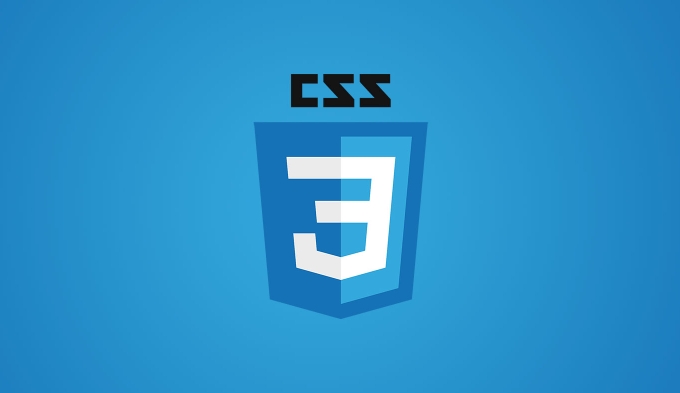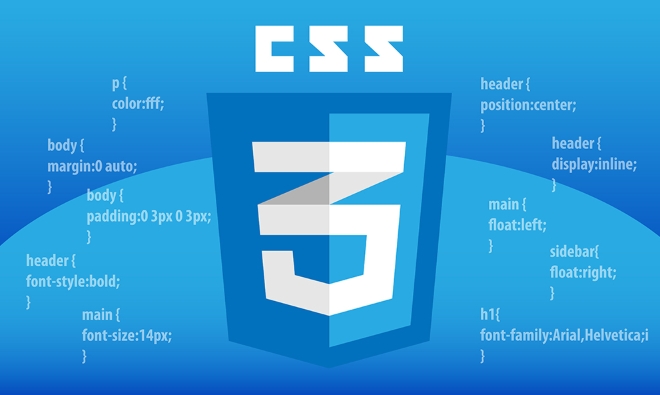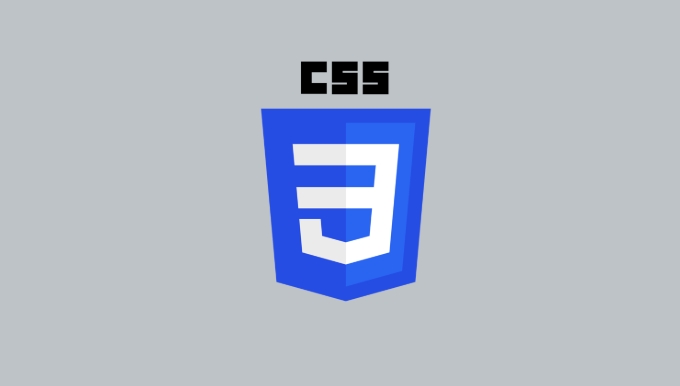In CSS, the attribute selector can set styles according to the attributes and values of the element, providing more flexible style control. ① Basic usage: Select elements with specific attributes, such as input[type] to match all inputs containing type attributes; ② Exact match: Use = to match specific attribute values, such as input[type="text"] to only match text input boxes; ③ Partial match: Use = (include), ^= (start), and $= (end), to match part of the attribute values, such as a[href="example.com"] to match anchors containing specific links; ④ Combination match: match multiple attributes at the same time, such as inputtype="text" to match required text boxes; the attribute selector is suitable for forms, links and other scenarios, and the style is accurately controlled without additional class, but excessively complex writing methods should be avoided to facilitate maintenance.

Using attribute selectors in CSS allows you to style the attributes and their values of HTML elements. It is more flexible than ordinary tags or class selectors, and is especially suitable for handling style control in specific scenarios, such as form elements, link types, etc.

Select an element with a certain attribute
The most basic usage is to select an element with a specific attribute, regardless of the value of the attribute.
input[type] {
border: 1px solid #ccc;
} The above line of code will match all elements containing type attributes in the input tag, such as <input type="text"> or <input type="email"> , but will not match input without type .

Common uses:
- Add icons to all links with
href - Distinguish link styles with
downloadattributes
Exactly match attribute values
If you want to select only elements whose attribute value is exactly equal to a certain value, you can use = for exact match.

input[type="text"] {
background-color: #f0f0f0;
} This code will only work on the input box of type="text" and will not affect type="email" or other types of input.
Practical Examples:
- Add
a[target="_blank"]a small icon with an external link - Links that distinguish different languages, such as
a[lang="zh"]
Partial matching attribute values
Sometimes you may need to match elements containing a certain string in the attribute value, and you can use several special symbols:
-
*=: Contains a certain value (substring matching) -
^=: Start with a value -
$=: ends with a value
a[href*="example.com"] {
color: red;
}This example will turn red with all link addresses containing "example.com".
Commonly used scenarios:
- Match links starting with
http://:a[href^="http"] - Match image file link end:
img[src$=".jpg"]
Use multiple attributes in combination
You can match multiple attributes at the same time to further refine the selection criteria.
input[type="text"][required] {
border-color: red;
}This code will only select elements that are both text input boxes and required items.
Tips:
- Can be used to distinguish between button styles in login forms and registration forms
- Controls the behavior and appearance of buttons in different states
Basically that's it. Although the attribute selector is simple, it is very practical in actual development, especially when precise style control is achieved without the need to add an additional class. However, be careful not to write too complicatedly, otherwise it is easy to make mistakes when maintained later.
The above is the detailed content of How to use attribute selectors in CSS?. For more information, please follow other related articles on the PHP Chinese website!

Hot AI Tools

Undress AI Tool
Undress images for free

Undresser.AI Undress
AI-powered app for creating realistic nude photos

AI Clothes Remover
Online AI tool for removing clothes from photos.

Clothoff.io
AI clothes remover

Video Face Swap
Swap faces in any video effortlessly with our completely free AI face swap tool!

Hot Article

Hot Tools

Notepad++7.3.1
Easy-to-use and free code editor

SublimeText3 Chinese version
Chinese version, very easy to use

Zend Studio 13.0.1
Powerful PHP integrated development environment

Dreamweaver CS6
Visual web development tools

SublimeText3 Mac version
God-level code editing software (SublimeText3)

Hot Topics
 How to use PHP to build social sharing functions PHP sharing interface integration practice
Jul 25, 2025 pm 08:51 PM
How to use PHP to build social sharing functions PHP sharing interface integration practice
Jul 25, 2025 pm 08:51 PM
The core method of building social sharing functions in PHP is to dynamically generate sharing links that meet the requirements of each platform. 1. First get the current page or specified URL and article information; 2. Use urlencode to encode the parameters; 3. Splice and generate sharing links according to the protocols of each platform; 4. Display links on the front end for users to click and share; 5. Dynamically generate OG tags on the page to optimize sharing content display; 6. Be sure to escape user input to prevent XSS attacks. This method does not require complex authentication, has low maintenance costs, and is suitable for most content sharing needs.
 PHP creates a blog comment system to monetize PHP comment review and anti-brush strategy
Jul 25, 2025 pm 08:27 PM
PHP creates a blog comment system to monetize PHP comment review and anti-brush strategy
Jul 25, 2025 pm 08:27 PM
1. Maximizing the commercial value of the comment system requires combining native advertising precise delivery, user paid value-added services (such as uploading pictures, top-up comments), influence incentive mechanism based on comment quality, and compliance anonymous data insight monetization; 2. The audit strategy should adopt a combination of pre-audit dynamic keyword filtering and user reporting mechanisms, supplemented by comment quality rating to achieve content hierarchical exposure; 3. Anti-brushing requires the construction of multi-layer defense: reCAPTCHAv3 sensorless verification, Honeypot honeypot field recognition robot, IP and timestamp frequency limit prevents watering, and content pattern recognition marks suspicious comments, and continuously iterate to deal with attacks.
 How to build a PHP Nginx environment with MacOS to configure the combination of Nginx and PHP services
Jul 25, 2025 pm 08:24 PM
How to build a PHP Nginx environment with MacOS to configure the combination of Nginx and PHP services
Jul 25, 2025 pm 08:24 PM
The core role of Homebrew in the construction of Mac environment is to simplify software installation and management. 1. Homebrew automatically handles dependencies and encapsulates complex compilation and installation processes into simple commands; 2. Provides a unified software package ecosystem to ensure the standardization of software installation location and configuration; 3. Integrates service management functions, and can easily start and stop services through brewservices; 4. Convenient software upgrade and maintenance, and improves system security and functionality.
 What are common CSS browser inconsistencies?
Jul 26, 2025 am 07:04 AM
What are common CSS browser inconsistencies?
Jul 26, 2025 am 07:04 AM
Different browsers have differences in CSS parsing, resulting in inconsistent display effects, mainly including the default style difference, box model calculation method, Flexbox and Grid layout support level, and inconsistent behavior of certain CSS attributes. 1. The default style processing is inconsistent. The solution is to use CSSReset or Normalize.css to unify the initial style; 2. The box model calculation method of the old version of IE is different. It is recommended to use box-sizing:border-box in a unified manner; 3. Flexbox and Grid perform differently in edge cases or in old versions. More tests and use Autoprefixer; 4. Some CSS attribute behaviors are inconsistent. CanIuse must be consulted and downgraded.
 What is the accent-color property?
Jul 26, 2025 am 09:25 AM
What is the accent-color property?
Jul 26, 2025 am 09:25 AM
accent-color is an attribute used in CSS to customize the highlight colors of form elements such as checkboxes, radio buttons and sliders; 1. It directly changes the default color of the selected state of the form control, such as changing the blue check mark of the checkbox to red; 2. Supported elements include input boxes of type="checkbox", type="radio" and type="range"; 3. Using accent-color can avoid complex custom styles and extra DOM structures, and maintain native accessibility; 4. It is generally supported by modern browsers, and old browsers need to be downgraded; 5. Set accent-col
 Describe the `vertical-align` property and its typical use cases
Jul 26, 2025 am 07:35 AM
Describe the `vertical-align` property and its typical use cases
Jul 26, 2025 am 07:35 AM
Thevertical-alignpropertyinCSSalignsinlineortable-cellelementsvertically.1.Itadjustselementslikeimagesorforminputswithintextlinesusingvalueslikebaseline,middle,super,andsub.2.Intablecells,itcontrolscontentalignmentwithtop,middle,orbottomvalues,oftenu
 CSS transitions tutorial
Jul 26, 2025 am 09:30 AM
CSS transitions tutorial
Jul 26, 2025 am 09:30 AM
CSStransitionsenablesmoothpropertychangeswithminimalcode,idealforhovereffectsandinteractivefeedback.1.Usethesyntaxtransition:propertydurationtiming-functiondelay;todefinetransitions,liketransition:background-color0.3sease0.1s;.2.Specifytransition-pro
 How to change text color in CSS?
Jul 27, 2025 am 04:25 AM
How to change text color in CSS?
Jul 27, 2025 am 04:25 AM
To change the text color in CSS, you need to use the color attribute; 1. Use the color attribute to set the text foreground color, supporting color names (such as red), hexadecimal codes (such as #ff0000), RGB values (such as rgb(255,0,0)), HSL values (such as hsl(0,100%,50%)), and RGBA or HSLA with transparency (such as rgba(255,0,0,0.5)); 2. You can apply colors to any element containing text, such as h1 to h6 titles, paragraph p, link a (note the color settings of different states of a:link, a:visited, a:hover, a:active), buttons, div, span, etc.; 3. Most






